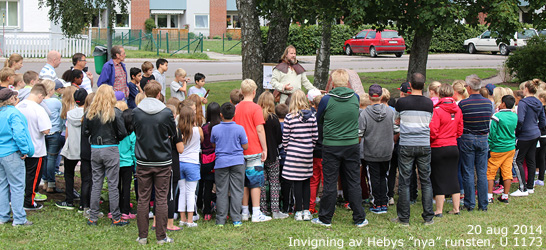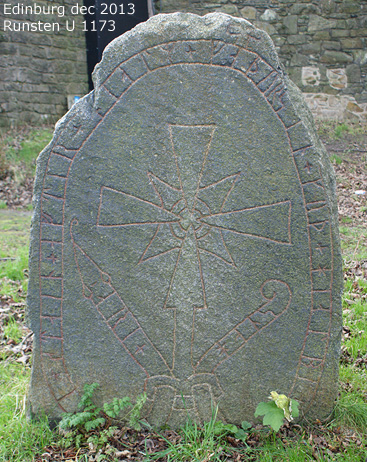|
Year 1787
Sir Alexander Seton, who lived in the area, decided to
give the rune stone to his friends in Scotland as a gift.
Once the stone arrived in Scotland, it was displayed
alongside other antiquities but came to stand forgotten
close to Edinburgh castle after a while. In Sweden, the
stone was presumed to be “lost”.
In the middle of the the 20th century, Johan
Nordenfalk rediscovered the runestone close to Edinburgh
castle.
Year 2012
Linda Silja and Mats Köbin, two passionate culture bearers
in Heby County, wished for the rune stone to be returned to
its original place but realised that this would be very
difficult if not impossible. Instead, they got in touch with
me, Kalle Runristare, rune master by trade, and asked me to
come up with ideas for a copy/reconstruction.
Finding a
solution took time, but in the end of 2013, a contract was
signed. At the same time as the work on the stone began,
Mats started a fund-raising group on
Facebook:
Hebys “nya” runsten >
Year 2013
In order to do a good job, I needed to see the original
stone in Edinburgh.
In December 2013, I travelled there to document the stone
and to get to know it in detail.
Read more about the trip here
>
Year 2014
During the spring of 2014, adequate material was ordered
from the stonemasonry at Vätö. During the summer of the same
year, a detailed reconstruction of Erik’s rune stone was
carved.
Read more about the process here
>
20th of August 2014
Hebys “nya” runsten, The “New” Runestone of Heby, was
inaugurated.

Year 2015
This website was uploaded containing new research and
theories about all of Erik’s
work known today, and descriptions of his work based on the
ornamentation he used.
|
 In order to do a good job, I needed to
see the original stone in Edinburgh.
|


